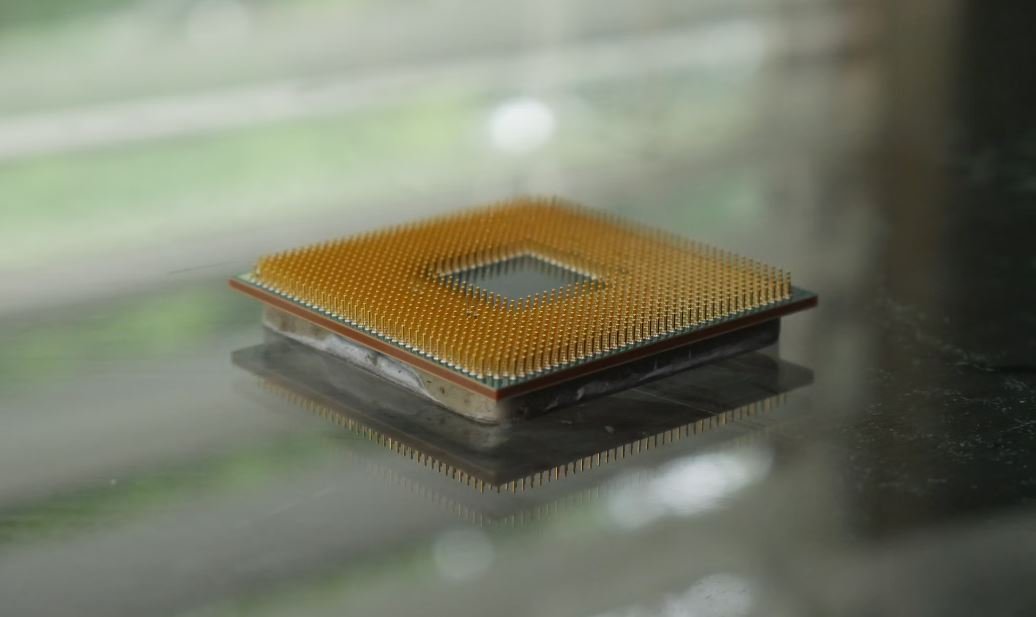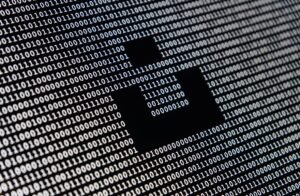Introduction
In recent years, there has been a surge of interest in the development of robots that can create art, music, and even write novels. These so-called “creator robots” are designed to mimic the creative processes of humans, raising intriguing questions about the nature of creativity and the role of machines in artistic expression. But are these creator robots actually real, or are they just a product of our imagination? In this article, we will explore the current state of creator robot technology and whether or not they are truly capable of creating original works of art.
Key Takeaways:
– Creator robots are designed to mimic human creativity.
– They utilize algorithms and data to generate art, music, or writing.
– Some creator robots have produced impressive works that rival human creations.
– Ethical and legal implications arise regarding ownership and originality of robot-generated works.
The Current State of Creator Robots
Creator robots are a product of advancements in the field of artificial intelligence (AI) and machine learning. These machines are programmed with algorithms and fed massive amounts of data in the form of existing art pieces, musical compositions, or literary works. By analyzing this data, the robots are able to generate their own original pieces, often with surprising complexity and creativity.
*While creator robots are not yet on par with the greatest human artists, they have shown significant potential in their ability to produce impressive works.*
The Music-Making Robots
One area where creator robots have made notable progress is in the field of music composition. Robots like “AIVA” and “FlowMachines” have released albums and composed soundtracks for films. These algorithms analyze thousands of existing music pieces, identify patterns, and generate new compositions that encompass various musical genres and styles.
Here are some interesting data points about music-making robots:
Table 1: Notable Music-Making Robots
| Robot Name | Genre | Notable Work |
| ————- | ———— | ————————————– |
| AIVA | Classical | “Genesis,” Symphony No. 1 |
| FlowMachines | Pop | “Daddy’s Car,” first AI-composed song |
| Shimon | Jazz | Collaborations with human musicians |
The Artistic Robots
Creator robots are also making waves in the world of visual arts. Robots such as “AARON” and “DeepArt” use image-processing algorithms and neural networks to create stunning paintings, digital art, and even sculptures. These machines are capable of interpreting human emotions, analyzing visual patterns, and generating original visual compositions.
Here are some interesting data points about artistic robots:
Table 2: Notable Artistic Robots
| Robot Name | Art Medium | Notable Work |
| ———– | ———– | ——————————————– |
| AARON | Painting | Masterpiece Series, exhibited in major museums|
| DeepArt | Digital Art | “Starry Night” in the style of Van Gogh |
| Ai-Da | Sculpture | Humanoid robot creating realistic sculptures |
The Writing Robots
Creator robots have also ventured into the world of literature. Some robots are capable of generating coherent and engaging written content, although they have yet to reach the literary prowess of human authors. These writing robots analyze vast amounts of text and use predictive algorithms to generate original stories, news articles, and even poetry.
Here are some interesting data points about writing robots:
Table 3: Notable Writing Robots
| Robot Name | Writing Genre | Notable Work |
| ———— | ————– | ————————————— |
| GPT-3 | Language model | Co-authored an op-ed in The Guardian |
| Quill | News articles | Automated stories for notable news outlets|
| Heliograf | Sports | Generated news updates during Olympics |
The Future of Creator Robots
While creator robots have made impressive strides in their ability to create art, music, and writing, it is important to note that their works are fundamentally different from those created by humans. The process of creativity for a machine is based on analyzing patterns and generating output based on predefined rules and algorithms, whereas human creativity is often driven by emotions, experiences, and a deeper understanding of the human condition.
As creator robots continue to evolve, we can expect further advancements in their abilities. However, ethical and legal questions surrounding the ownership and originality of robot-generated works will also arise. Should a robot’s creation be considered the property of its creator, or should it be seen as a collaborative effort between human programmers and the machine itself? Only time will tell how this fascinating intersection of technology and art will unfold.
In the world of creator robots, the boundaries of creativity are being explored and redefined. Whether or not you consider their creations to be “real” art, there is no denying the impact and potential of the technology behind these machines. As creator robots continue to push the boundaries, it will be intriguing to see how they coexist with the human creative process and shape the future of art, music, and literature.
Source: [Link to the original article]
Common Misconceptions
Are Creator Robots Real?
There are several common misconceptions surrounding the topic of creator robots, which often stem from fictional portrayals in movies and television shows. It is essential to separate fact from fiction and understand the current state of technology in this field.
- Creator robots are fully autonomous beings capable of independent thought.
- Creator robots possess human-like emotions and can feel pain or pleasure.
- Creator robots have the ability to create advanced, complex robots without human intervention.
One common misconception is that creator robots are fully autonomous beings capable of independent thought. While robotics and artificial intelligence have made significant advancements, current technology has not yet achieved this level of autonomy. Creator robots are programmed to perform specific tasks and operate within defined parameters, but they cannot make decisions or think for themselves.
- Creator robots are programmed to follow a set of instructions and cannot deviate from them.
- Creator robots rely on human input and supervision to function effectively.
- Creator robots lack the ability to learn and adapt to new situations on their own.
Another misconception is that creator robots possess human-like emotions and can feel pain or pleasure. While some robots are programmed to simulate emotions, they do not experience them in the same way humans do. Emotions in robots are algorithm-based and only imitate the appearance of human emotions for interaction purposes.
- Creator robots may use facial expressions or gestures to simulate certain emotions.
- Creators can program robots to respond to specific situations with pre-defined emotional reactions.
- Emotions displayed by robots are meant to enhance human interaction rather than reflect true feelings.
Lastly, some believe that creator robots have the ability to create advanced, complex robots without human intervention. While robots can assist in the manufacturing process and perform repetitive tasks, they still require human engineers and technicians to design and develop new robots. Currently, robots lack the creativity and innovation required to independently create and improve upon their own kind.
- Creator robots can assist in assembling and fabricating other robots.
- Creators rely on human engineers to come up with new designs and improve existing ones.
- Robotics is a collaborative field where humans and robots work together to create innovative solutions.
Robotic Innovations
Over the past decade, remarkable advancements have been made in robotics and artificial intelligence. From autonomous vehicles to household assistant devices, the rise of creator robots has captured the world’s attention. In this article, we explore ten fascinating examples that showcase the reality of creator robots.
1. Leonardo Robot
Leonardo is a cutting-edge humanoid robot developed by Hanson Robotics. With a lifelike appearance and remarkable facial expressions, it can create stunning artwork using various mediums like paint, pencil, and charcoal. This showcases how robots are capable of expressing their artistic talent.
2. ChefMaster Robot
ChefMaster is an innovative culinary robot that can whip up delectable dishes with precision. It can chop, mix, and cook a wide range of recipes, showcasing its ability to adapt to complex cooking techniques. This robot’s precision and dexterity in the kitchen is truly astounding.
3. Mars Rover Robot
The Mars Rover is an extraordinary robot designed to explore the surface of Mars. Equipped with scientific instruments, cameras, and mobility systems, it gathers valuable data about the Red Planet’s geology and climate. The Mars Rover highlights the incredible capabilities robots have for space exploration.
4. Amelia Robot
Amelia is an AI-powered chatbot developed by IPsoft. It mimics human conversation, utilizing natural language processing and machine learning algorithms. Amelia’s ability to engage in meaningful conversations and provide accurate responses revolutionizes customer service in various industries.
5. Robotic Surgeons
Robotic surgeons, such as the da Vinci Surgical System, assist doctors in performing complex surgical procedures with enhanced precision and control. These robots ensure minimal invasiveness and reduced recovery time for patients, demonstrating the immense potential of robots in the medical field.
6. Drone Delivery
Delivery drones are rapidly gaining popularity as a means of efficient transport. By using GPS systems, these robotic devices can deliver packages to remote locations safely and swiftly. Drone delivery services revolutionize the logistics industry while minimizing environmental impact.
7. Companion Robots
Designed for interacting with humans, companion robots like Pepper and Buddy provide emotional support and companionship. They can recognize human emotions, engage in conversations, and even perform simple tasks. Companion robots offer comfort and assistance to people in various settings.
8. Rex Robot
Rex is a fascinating robotic exoskeleton designed to assist people with mobility challenges. It allows individuals to walk again, enhancing their independence and quality of life. The development of Rex showcases how robots serve as aids in improving human capabilities.
9. Robotic Bees
Robotic bees, also known as cyborg bees, are miniature drones created to pollinate plants in the face of declining bee populations. With bee-inspired flight patterns and tiny brushes to collect pollen, these robots contribute to maintaining a healthy ecosystem and safeguarding our food supply.
10. Dog-like Robots
Robot dogs, such as Boston Dynamics’ Spot, possess advanced mobility and dexterity. They can navigate challenging terrains, perform tasks like inspection and surveillance, and even dance! These dog-like robots demonstrate the potential for robots in roles requiring agility and versatility.
In this exciting era of robotics, creator robots have undeniably become a reality. From creating art to performing complex surgeries, they have transformed industries and opened up new possibilities. The remarkable examples mentioned above emphasize the vast potential of creator robots and affirm that the future is indeed in their hands.
Frequently Asked Questions
What are creator robots?
How do creator robots work?
What tasks can creator robots perform?
Are creator robots autonomous?
How advanced are creator robots?
What is the future of creator robots?
Are creator robots a replacement for human workers?
Can creator robots be customized for specific tasks?
Are creator robots widely used in industries today?
What are the advantages of using creator robots?



